Key takeaways:
- Artist collaborations blend diverse musical styles, resulting in innovative sounds and emotional experiences for both artists and audiences.
- Collaborations can take various forms, including joint albums, feature tracks, and spontaneous live performances, each offering unique opportunities for creativity.
- Collaboration fosters vulnerability, flexibility, and active listening, which are essential skills for enhancing artistic expression and innovation.
- Future collaborations are envisioned with artists focusing on genre-blending, social change, and advanced storytelling, emphasizing the transformative power of music.
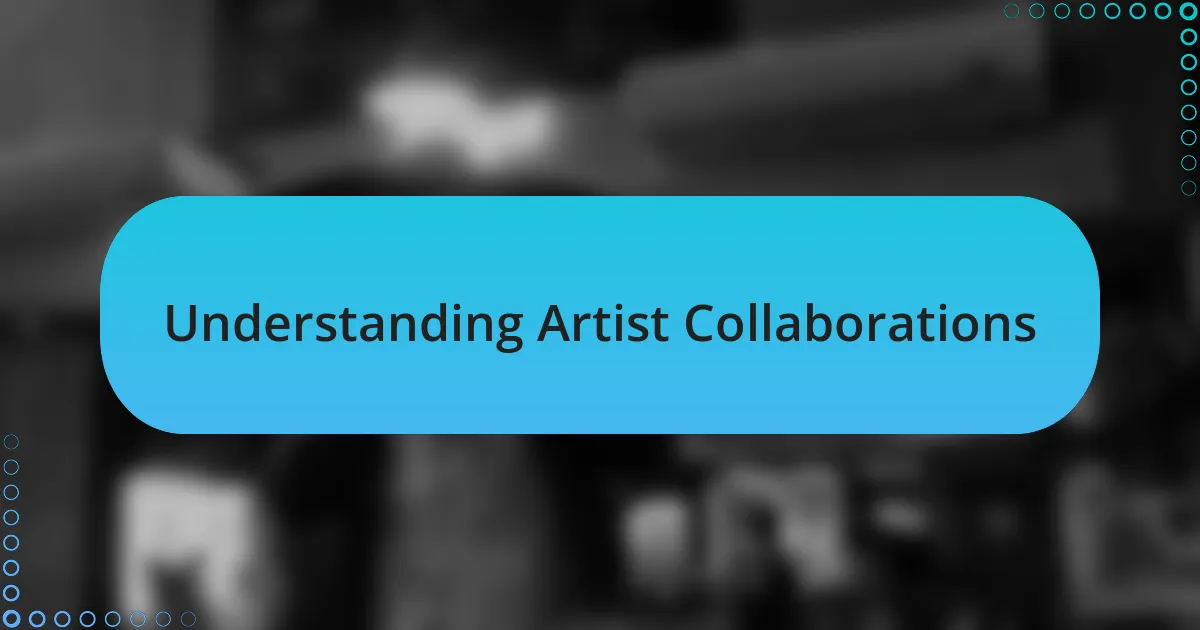
Understanding Artist Collaborations
Artist collaborations are fascinating because they often bring together vastly different creative minds, resulting in unexpected and exciting music. I remember when I first heard a track featuring two artists from opposing genres—rap and classical. The fusion was shocking yet beautiful, making me wonder how two such distinct styles could harmonize. Have you ever experienced a song that shifted your perspective on a genre?
Moreover, these collaborations can be a powerful emotional experience for both creators and listeners. For instance, I once attended a concert where two well-known artists surprised the audience by performing a duet. The energy was electric, and I could feel the genuine respect and admiration they had for each other. It demonstrated that music is not just about personal achievement; it’s about connection and shared creativity.
Sometimes, I ask myself what drives artists to collaborate. Is it the desire to explore new sounds, or perhaps the thrill of creative risk? From my experience, every collaboration seems to breathe new life into the artists involved, invigorating their artistry and sparking fresh inspiration. This dynamic not only enriches their individual catalogues but also creates a new avenue for fans to discover and appreciate music.

Importance of Collaborations in Music
Collaborations in music are vital because they open doors to a multitude of influences and styles. I recall discussing a track that featured artists from vastly different backgrounds—one was rooted in jazz, while the other was known for pop. The blend was remarkable, creating a sound that neither could have produced alone. Have you ever felt that spark when two diverse musical talents come together? It’s like witnessing a vibrant tapestry come alive.
The emotional resonance of these partnerships often amplifies the listening experience. Once, I stumbled upon a live performance where duo artists shared their personal stories between songs, enriching the audience’s connection to their music. This genuine exchange not only highlighted the importance of collaboration but also reminded me that art often derives its power from shared experiences. I wonder, how does this connection influence our interpretation of their work?
In my view, collaborations serve as a catalyst for innovation in the music industry. During one of my favorite music festivals, artists hopped onstage to join one another mid-set, transforming their music into something entirely new. These spontaneous collaborations reminded me that creativity thrives in a supportive environment. Isn’t it awe-inspiring how these moments can redefine genres and inspire listeners?
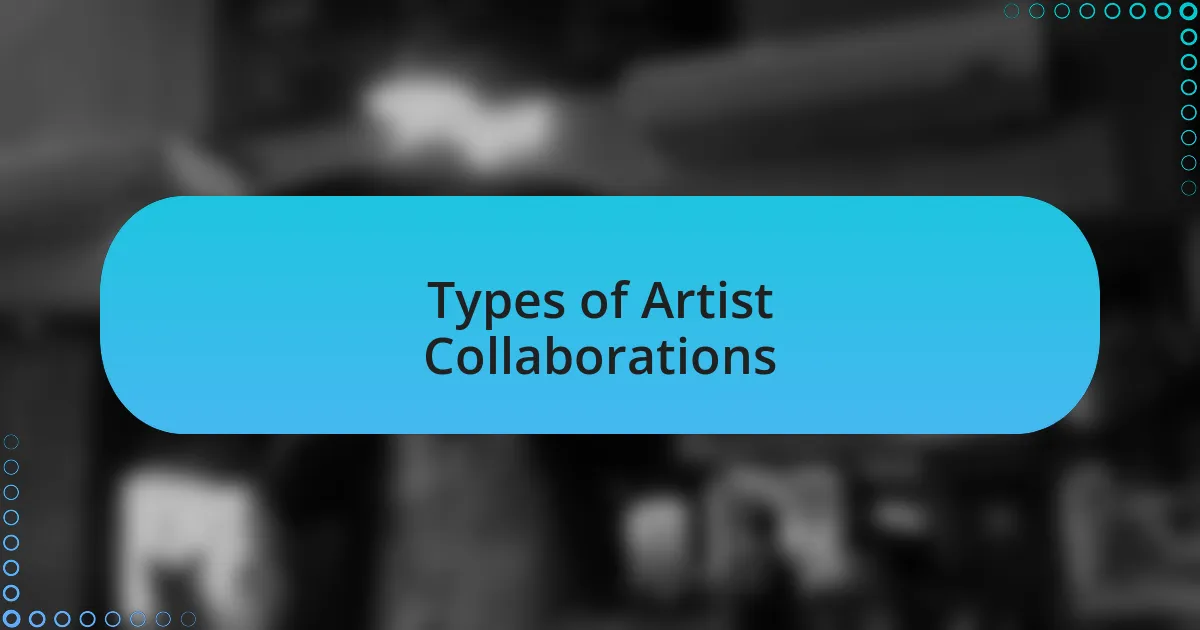
Types of Artist Collaborations
When it comes to artist collaborations, there are several intriguing types to explore. One common form is the joint album or EP. I remember when two of my favorite indie artists combined their talents for a project that felt like a conversation between their distinct styles. This collaboration not only showcased their individual strengths but also produced a cohesive sound that left me yearning for more.
Another engaging type is the feature collaboration, where an artist lends their voice or talent to another’s track. I once heard a hip-hop artist collaborating with a classical violinist, merging the worlds of rap and symphonic music seamlessly. It made me wonder—how does such a pairing challenge the norms of their respective genres? It seems that these features often lead to delightful surprises that can elevate a song to new heights.
Lastly, there are live collaborations, which can be spontaneous and electrifying, much like discovering a hidden gem. I witnessed this firsthand during a concert where an unexpected guest, an electronic artist, joined the main act on stage. The energy was palpable, and the synergy between the artists created an unforgettable experience for the audience. Have you ever been caught off guard by an unplanned collaboration that changed the entire mood of a performance? It’s moments like these that remind me of the unpredictable yet exhilarating nature of music.
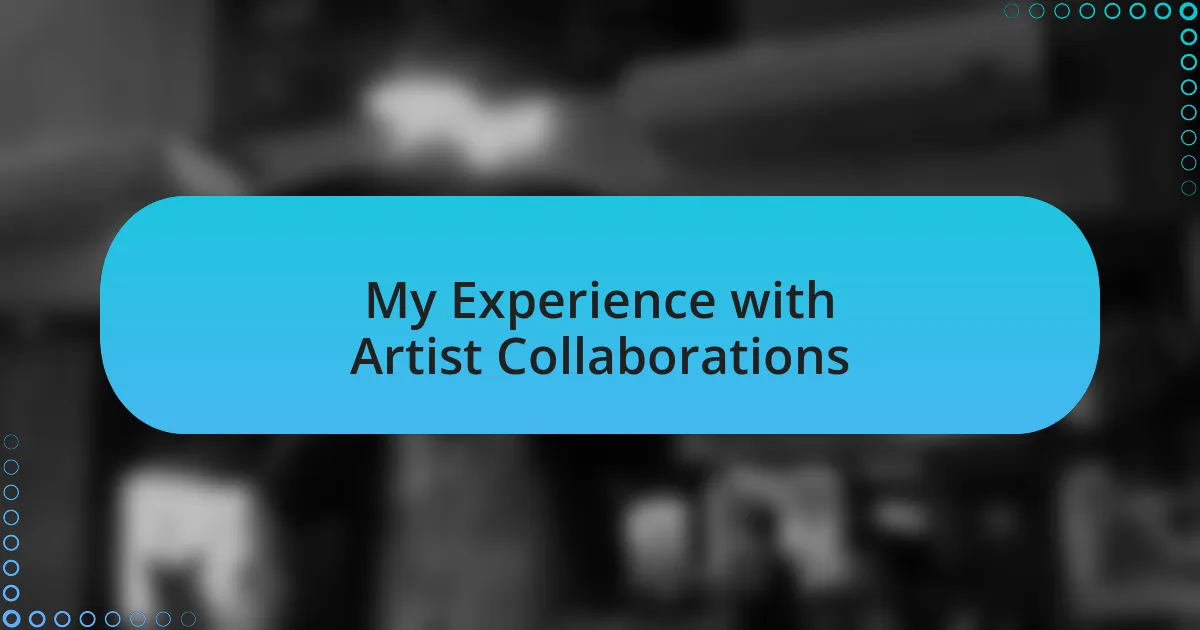
My Experience with Artist Collaborations
When I think about my experiences with artist collaborations, one particular project stands out. I had the opportunity to work alongside a local band and a singer-songwriter known for her poetic lyrics. It was refreshing to see how her storytelling intertwined with our sound, sparking a wave of creativity that none of us anticipated. How often do you get to witness your music evolve in such an organic way?
I also remember collaborating with a friend who was a visual artist. We decided to create a live performance that combined music with his stunning visuals. The synergy was incredible! Each note we played was complemented by bursts of color on the screen, and I could feel the connection with the audience deepen. Isn’t it fascinating how different artistic mediums can enrich each other in unexpected ways?
One of the most memorable collaborations for me was when we joined forces with a community choir for a charity event. The sheer power of those voices harmonizing with ours created a wave of emotion that resonated throughout the venue. It made me reflect on how music can unite people from all walks of life. Have you ever experienced a moment in music that made you feel connected to something larger than yourself? This collaboration certainly reaffirmed my belief in the transformative power of shared artistic experiences.
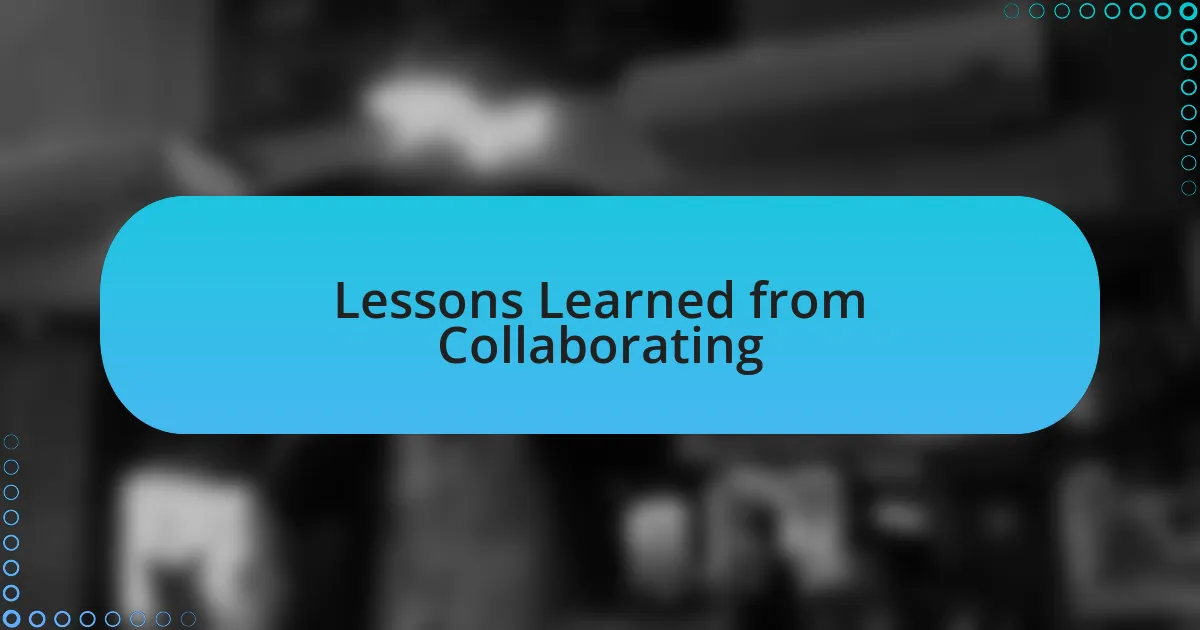
Lessons Learned from Collaborating
Collaborating with others in music taught me that vulnerability can be a strength. During one session, I hesitated to share my ideas, thinking they might not resonate. But when I finally opened up, I realized that my raw emotions inspired my collaborators to be more expressive. Has stepping outside your comfort zone ever led to unexpected results for you?
I also learned the importance of flexibility. There were moments when a melody I cherished was altered, and initially, it felt disheartening. However, embracing those changes led to a richer final piece that reflected all our influences. This adaptability often opens doors to creative possibilities I hadn’t considered. How does adaptability play a role in your experiences?
Finally, I’ve come to appreciate the value of active listening. In one collaboration, I focused intently on what my partner was expressing, which allowed me to build on their ideas and elevate the overall project. It reminded me that sometimes stepping back and truly hearing what others have to say can unlock a treasure trove of inspiration. When was the last time you listened closely to someone and found new insight?
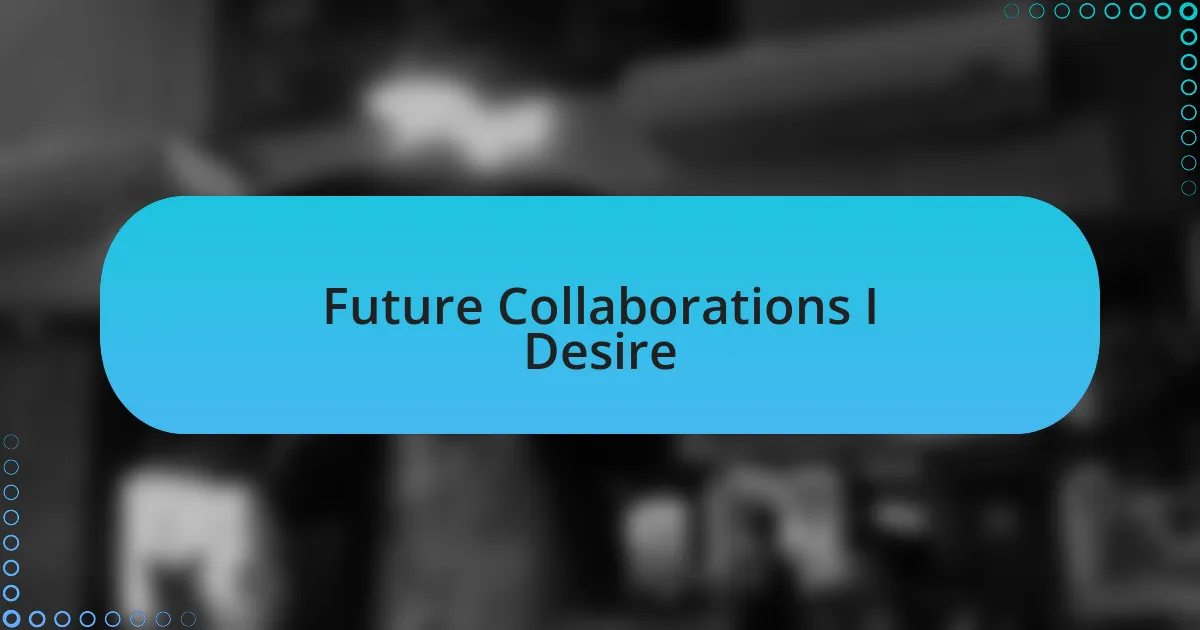
Future Collaborations I Desire
When I think about future collaborations, I can’t help but dream of working with artists who infuse different genres into their sound. Imagine a collaborative project that blends folk melodies with electronic elements. I once attended a live show where an indie folk artist performed alongside a DJ, and the energy was electrifying. Isn’t it fascinating how two contrasting styles can create something entirely unique and beautiful?
I also have a strong desire to collaborate with artists who focus on social change through their music. Engaging with musicians who channel their passion for activism into their work inspires me profoundly. One experience that sticks with me is when I was involved in a charity concert that combined music and meaningful dialogue. It was empowering to see how our songs sparked conversations about pressing societal issues. How powerful do you think music can be when it’s used as a tool for change?
Lastly, I would love to collaborate with songwriters who push the boundaries of storytelling in their lyrics. I remember discovering a piece where the narrative arc was so vivid that I felt every emotion alongside the characters. Could co-creating a song like that enhance my abilities as a storyteller? The prospect of weaving intricate narratives with fellow artists excites me, and I can’t wait to explore these opportunities in the future.